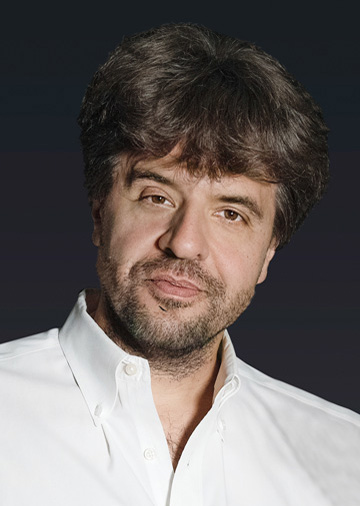

Waynflete Professor of Physiology, Centre for Neural Circuits and Behaviour, University of Oxford

Professor, Departments of Bioengineering and Psychiatry,
and Howard Hughes Medical Institute Stanford University
One of the most important goals in neuroscience has been to clarify the causal relationship between the activity of individual neurons that compose neural circuits and the behavior of individual organisms controlled by those circuits. Traditionally, neuronal circuit function has been studied by injuring neurons or altering neuronal activity with drugs or electrical stimulation. Although such methods are useful, they are unable to adequately clarify the involvement of individual cells in neural circuitry or the role of constantly changing neural activity. Dr. Miesenböck used genetic engineering to develop the concept and techniques required to clarify the function of neural activity at the organism level by harnessing light illumination to control the activity of membrane proteins expressed in specific neurons. Dr. Karl Deisseroth further developed a technique using light-activated proteins from microbes, allowing high temporal resolution and thereby establishing a method to determine the causal relationship between the activity of specific neurons and functions at the organism level.
In 2002, Miesenböck demonstrated for the first time that electrical activity in rat-cultured hippocampal neurons expressing chARGe proteins (the three photoreceptor genes that express rhodopsin, arrestin, and Gqα in Drosophila) can be freely controlled using light. Furthermore, he has successfully elucidated the neural network that controls male courtship behavior in Drosophila by administration of caged ATP, which dissociates ATP upon light stimulation, to specifically enhance neural activity in neurons that genetically express ATP receptor channels P2X2.
In 2005, Deisseroth focused on the channelrhodopsin ChR2, a light-gated ion channel found in green algae, to show for the first time that the activity of rat hippocampal neurons expressing ChR2 could be controlled in milliseconds using light illumination. Moreover, by expressing ChR2 and other related proteins in various mouse neuronal populations, he showed that the gamma brain waves associated with higher-order mental activity are formed by neural activity in specific inhibitory neuronal populations, and that the balance of excitatory-inhibitory neural activity in the prefrontal cortex controls social behavior and learning.
The innovative photic stimulation technologies used to control neural activity continue to improve, and they serve as an absolutely essential tool for understanding the function and role of neural circuits at the individual organism level. This is important not only from the perspective of fundamental biology research; light-sensitive membrane proteins could be used as a treatment for blind patients who still have retinal circuitry, and photic stimulation could also eventually be used in place of electrical stimulation for those afflicted with Parkinson’s disease.
For their work in developing the ideas and methods that use genetically addressable light-sensitive membrane proteins to unravel neural circuit function at the individual organism level, we believe that the achievements of Dr. Gero Miesenböck and Dr. Karl Deisseroth mark them as worthy recipients of the 2023 Japan Prize in the field of Life Science.